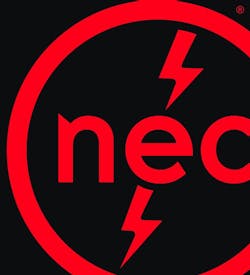Article 680, Part VI of the National Electrical Code (NEC) provides the requirements for permanently installed therapeutic pools and tubs. Here are some highlights from this area of the Code:
- The outlet supplying a self-contained therapeutic tub or tank must be GFCI-protected, unless otherwise noted in Art. 680 [Sec. 680.62(A)(1)].
- Something that is “otherwise noted” in Part VI: The tub or tank is three phase or rated over 250V or has a heater load of more than 50A.
- Part VI enumerates five types of parts that must be bonded [Sec. 680.62(B)]. One way to avoid an inadvertent omission is to follow this rule: If it's metallic and non-current carrying, bond it. That way, everything is at the same potential and you have overlooked nothing. The additional cost of accidentally “overbonding” is negligable.
- There is an exception to the Part VI bonding requirement, and also to the “bond everything” approach. Don't worry about small conductive surfaces unlikely to become energized, such as drain fittings not connected to metal pipes.
- Part VI also provides “grounding” requirements [Sec. 680.62(D)]. These are all about connecting to the equipment grounding conductor, not connecting to earth [Art. 100].
About the Author

Mark Lamendola
Mark is an expert in maintenance management, having racked up an impressive track record during his time working in the field. He also has extensive knowledge of, and practical expertise with, the National Electrical Code (NEC). Through his consulting business, he provides articles and training materials on electrical topics, specializing in making difficult subjects easy to understand and focusing on the practical aspects of electrical work.
Prior to starting his own business, Mark served as the Technical Editor on EC&M for six years, worked three years in nuclear maintenance, six years as a contract project engineer/project manager, three years as a systems engineer, and three years in plant maintenance management.
Mark earned an AAS degree from Rock Valley College, a BSEET from Columbia Pacific University, and an MBA from Lake Erie College. He’s also completed several related certifications over the years and even was formerly licensed as a Master Electrician. He is a Senior Member of the IEEE and past Chairman of the Kansas City Chapters of both the IEEE and the IEEE Computer Society. Mark also served as the program director for, a board member of, and webmaster of, the Midwest Chapter of the 7x24 Exchange. He has also held memberships with the following organizations: NETA, NFPA, International Association of Webmasters, and Institute of Certified Professional Managers.
